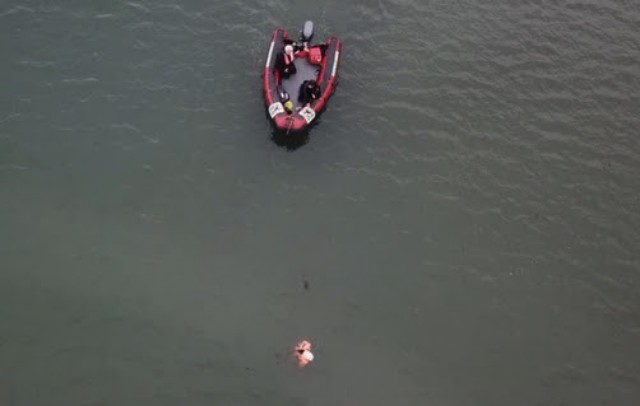has completed the delivery of a beyond visual line of sight (BVLOS) drone training course to the Police Service of Northern Ireland (PSNI), in what is believed to be the first example of routine training of this type undertaken outside of segregated airspace for emergency services in the UK.
Following a change in regulations from the UK Civil Aviation Authority (CAA) on 31 July 2017 that relaxed rules for emergency services’ use of drones, the PSNI sought the expertise that Consortiq has in delivering extended visual line of sight solutions to the UK emergency services, and the training was then rapidly initiated.
Consortiq’s Customer Success Manager, Séamus Kearns, who is also a search and rescue volunteer, said:
“It was a fantastic opportunity and privilege to help drive drone capability forward for the emergency services. This will ultimately contribute to helping to protect and save lives of the public. Drones offer significant advantages and we are seeing widespread use with many forces.”
The CAA’s Official Record Series (ORS) 4 No 1233, which outlined a relaxation of the normal operating limits for emergency service operators – subject to certain criteria being met – will apply to major incidents.
A major incident in this regard is defined as “one which is beyond the scope of business-as-usual operations and is likely to involve serious harm, damage, disruption or risk to human life or welfare, essential services, the environment or national security”.
Importantly, it states that the criteria for a relaxation of these limitations should first be in line with an appropriate decision that is taken while operating under the remit of the UK Emergency Services Joint Decision Model.
This is where to act within the normal framework might unduly bring harm or cause loss of life, so a decision is taken to temporarily exceed these limitations. It is akin to the current rules which allow emergency service vehicles to proceed through a road traffic red light and exceed speed limits where the circumstances of an event dictate that it is expedient to do so.
In ORS 1233, the relaxation of the limitation on the emergency services operator may have a significant increase in the level of risk undertaken during these types of operations. They must still operate within the bounds of the published operations manual, but can now fly out to 1,000m, or even beyond 2,000m in exceptional circumstances, following a decision by the appropriate level of tactical command for the incident.
The operational training involved operating a drone out to 1,000m (and beyond) which takes the emergency services operator into the territory of EVLOS and BVLOS operations. To operate at this distance takes established, robust procedures and a considerable amount of practice to ensure that an appropriate level of safety is maintained throughout, whilst balancing the tactical need at the same time.
The biggest difference is that the operator is likely to be unable to maintain the visual line of sight requirement stated on a standard permission for commercial operation. There are several reasons why this might happen, but it is more commonly because of the distance of the drone from the operator.
It could also be affected by the performance of the drone (if it has a high transit speed), weather conditions (including smoke, fire and heat haze) and even the proximity of obstacles in the major incident environment. To maintain a sufficient level of situational awareness for the operator to still take action to avoid collisions with other aircraft and obstacles, a network of observers may be required, all of whom must be fully trained and equipped to work as a whole team, communicating openly and concisely with the remote pilot in control.
Effective communication in this type of operation is critical. With an EVLOS drone flight, a new level of communications skills and proficiency is required, and an operator must be trained to a high degree to ensure smooth operation when it counts. All of this is challenging under normal circumstances, but when it is considered that the operator would normally conduct this type of operation during a large incident where lives and property are threatened and there is a complex network of first responders on site, this is a particularly challenging task.
Source: Press Release

